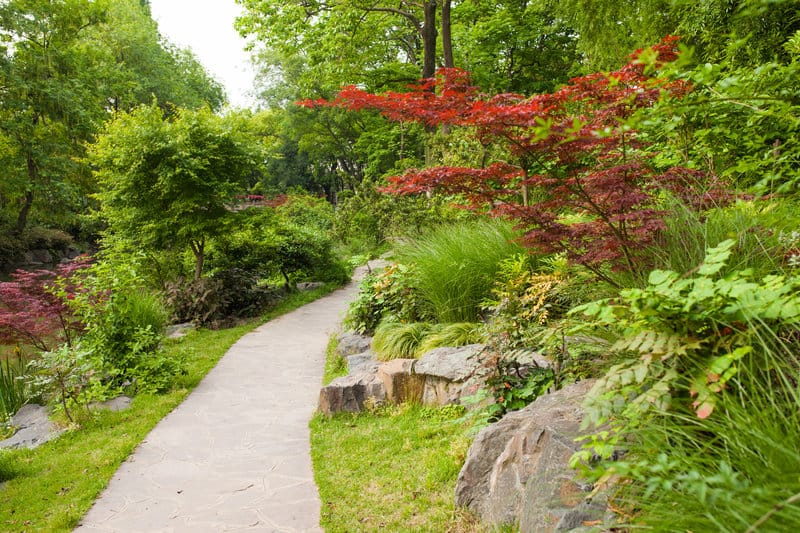CA Contractors #344056

Landscape design has much in common with interior design, including the need to balance texture when choosing your features and fixtures (aka, softscape and hardscape features). While experienced landscape designers always take texture into the equation, homeowners often forget this essential element, which can leave outdoor spaces looking flat.
The following are easy-to-follow tips for ensuring your outdoor spaces benefit from a mixture of exciting textures.
The earth has her own balance of elements – earth, fire, wood, water, metal, stone. Reviewing them is a great place to start when planning outdoor spaces.
In addition to the trees, shrubs, and flowering plants included in your design consider whether you’ve integrated a balance of the other elements.
Examples include:
The simple act of varying the finishes of your hardscape features adds texture to the mix automatically.
When shopping for plant species, always research their ideal growing conditions as well as their full-growth capacity. Professional landscapers always create hand-drawn or digital plans – made to scale – to get an idea of how everything will look when plants/trees/shrubs are mature.
Varying the heights and depths of your design inherently creates layers and texture throughout your yard(s). By considering plants’ mature heights and widths – and sketching a visible model of them - you can better place plants to create more texture.
If you spend time hiking in our beautiful Bay Area state and county parks, you’re well-versed in texture - even if you don’t know it. The fascinating thing about Mother Nature is that she always creates texture-rich landscapes.
By utilizing indigenous or native trees and plants, you benefit in multiple ways since native plants also lend themselves to water conservation and a more pollinator-rich landscape as well.
If you’re planning to install a sizable portion of lawn, rethink its size and shape a bit. For example, giving up the square corners and planting trees with a nice mulched bed at their base changes up the big, flat expanse of green – plus you gain shade coverage to boot.
Curving the lawn’s perimeter is another way to add texture. By the simple act of balancing square, linear perimeter lines and planter beds with a curved lawn shape creates textural contrasts.
Is your yard area surrounded by significant expanses of fencing? Break up the monotony by planting climbing plants or espaliered fruit trees to alternate between metal or wood texture and greenery.
One of the biggest landscape design mistakes made by amateurs is forgetting to imagine their outdoor design in every season. It’s tempting to hit your local nursery and purchase all of the gorgeous blooming plants. But, don’t forget that they won’t be blooming in three, five, or seven months from now.
If you opt to complete a DIY landscape design, choose your advisors – preferably consulting with a well-established, local nursery. Have them walk through the landscape plan with you – considering what blooms in fall, winter, spring, and summer.
By designing a landscape that offers a variety of colors and blooms throughout the seasons, you’ll gain different textures from season-to-season, too.
A creative lighting design creates texture by showcasing and (literally) spotlighting some of the architectural and living landscape features. Illuminating the branches and leaves of a tree, highlighting some of your bushes, and ensuring there is safety lighting along pathways and stairways provides visual texture at night – a time when much of the world becomes one- or two-dimensional for human eyes.
Would you like to create a landscape that is lush year-round, and that balances texture, color, and functionality? Contact the design team at Bay Area Landscapes to schedule a consultation. 510-342-3064.